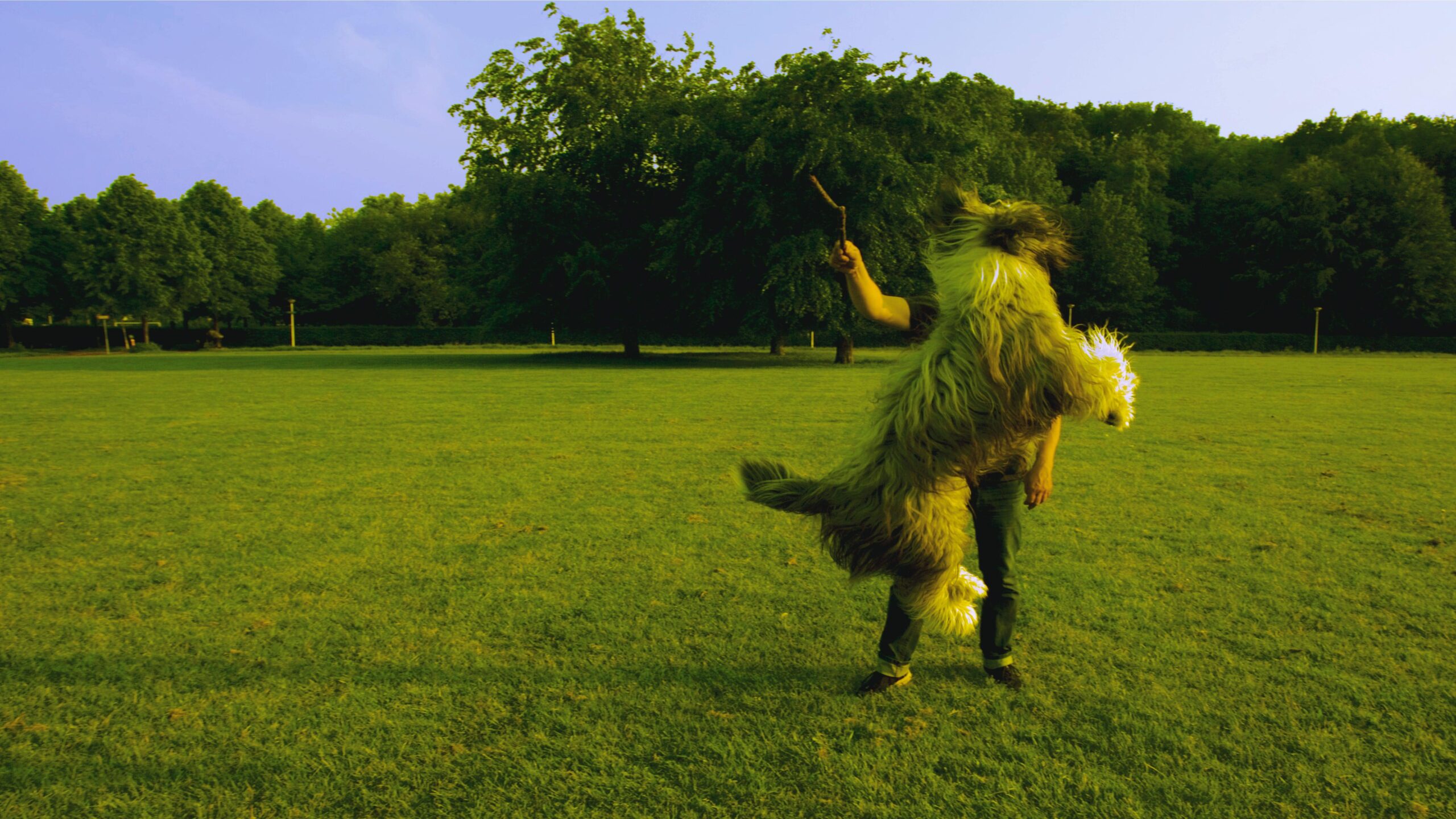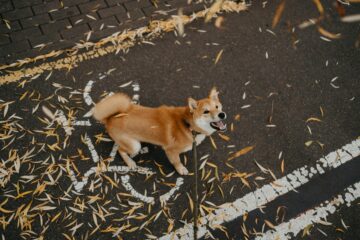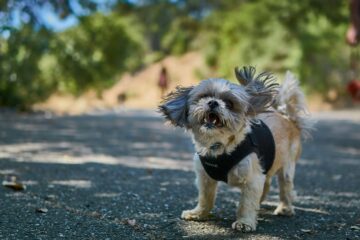Welcoming guests or encountering strangers with an exuberant dog that can’t resist jumping up can be both endearing and challenging.
The desire to share the joy and enthusiasm of our furry friends is natural, but it’s equally important to instill good behavior.
In this comprehensive guide, we’ll explore 12 practical and effective tips on How to Stop a Dog from Jumping Up on Strangers.
Whether you’re dealing with an overly enthusiastic puppy or an older dog with ingrained habits, these strategies aim to create a harmonious balance, allowing your dog to express excitement while respecting personal space.
Jumping up on strangers is a common behavior among dogs, driven by their social nature and eagerness to connect.
While it’s a sign of friendliness, it can lead to awkward situations and even discomfort for those on the receiving end.
Addressing this behavior not only enhances the overall experience of interacting with your dog but also ensures positive and stress-free encounters for everyone involved.
Table of Contents
How to Stop a Dog from Jumping Up on Strangers
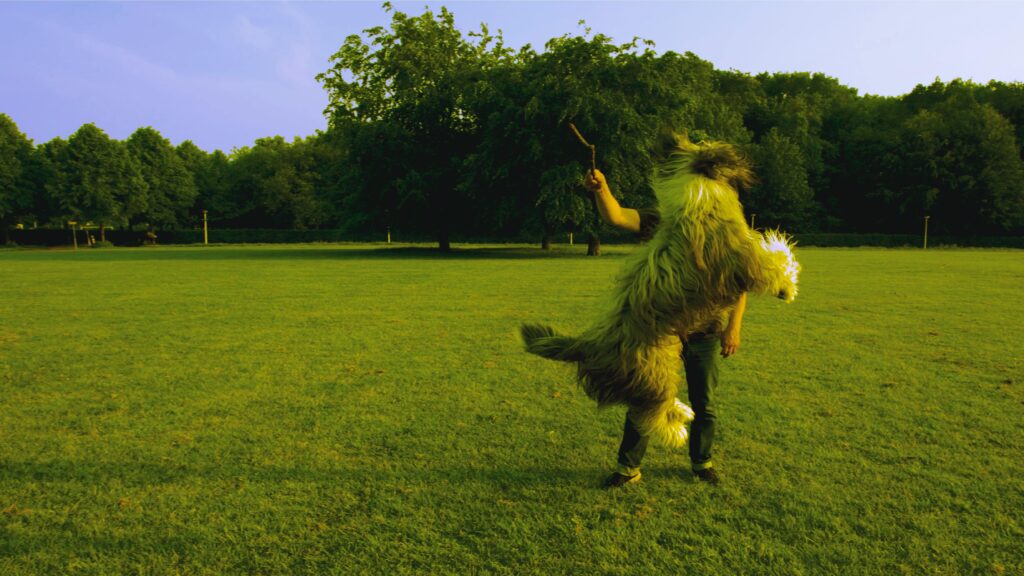
1] Understanding the Excitement
Delve into the world of your dog’s excitement and unravel the reasons behind their jumping behavior.
While dogs often jump as an exuberant expression of joy, it’s crucial to decode the specific triggers that incite this behavior.
Observing the context in which your dog jumps, such as during greetings or playtime, enables you to address the root cause effectively.
Whether it’s a response to heightened energy, social interactions, or anticipation of a rewarding activity, understanding these nuances lays the foundation for targeted training.
2] Basic Obedience Training
A harmonious relationship with your canine companion begins with a foundation of basic obedience.
Integrate fundamental commands like “sit” and “stay” into your dog’s training regimen.
This not only establishes a framework for good behavior but also provides a reliable means of communication between you and your dog.
Consistent training sessions reinforce positive habits and play a pivotal role in diminishing jumping tendencies, promoting a well-mannered and enjoyable companionship.
Tip: “Consistent training reinforces positive habits and reduces jumping tendencies.”
3] Positive Reinforcement
Foster calm greetings through the power of positive reinforcement.
When your dog refrains from jumping during interactions, seize the opportunity to reward them with treats, verbal praise, or affectionate gestures.
Associating polite greetings with positive outcomes reinforces the desired behavior.
This creates an encouraging feedback loop, where your dog learns that exhibiting restraint leads to enjoyable and rewarding interactions, making calm greetings a desirable experience.
4] Consistent Commands
Establishing clear and consistent commands is paramount in setting expectations for appropriate greetings.
Define specific commands that signal to your dog when jumping is unacceptable, such as “off” or “down.”
Consistency in using these commands helps your dog understand the desired behavior and reduces confusion.
Clear communication builds a mutual understanding between you and your furry friend, reinforcing the boundaries of acceptable conduct during greetings.
• Establish clear and consistent commands for appropriate greetings • Define specific commands like "off" or "down" for unacceptable jumping • Consistency in command usage helps your dog understand desired behavior • Clear communication builds mutual understanding and reinforces boundaries
5] Physical Exercise
A well-exercised dog is less likely to engage in excessive jumping, as physical activity provides an outlet for pent-up energy.
Regular walks, engaging playtime, and mental stimulation contribute to channeling your dog’s energy in the right direction.
A tired pup is more inclined to greet strangers with a composed demeanor, reducing the likelihood of exuberant jumping behavior.
6] Greeting Rituals
Introduce alternative greeting behaviors to redirect your dog’s instinct to jump.
Teach them a more acceptable greeting ritual, such as offering a handshake or sitting politely.
By replacing the impulse to jump with a learned alternative, you guide your dog toward friendly and controlled interactions.
This not only curtails the airborne theatrics but also enhances your dog’s social skills, making them a pleasure to engage with.
Tip: “Alternative greetings, like handshakes or sitting, ensure friendly interactions without airborne theatrics.”
7] Avoiding Reinforcement of Jumping
Dogs seek attention, even if it comes in the form of reprimands.
When your dog jumps, be mindful of inadvertently reinforcing the behavior with scolding or negative reactions.
Instead, redirect their focus to more positive interactions, such as sitting or following a specific command.
Consistency in this approach ensures that your dog associates attention with desirable behaviors, steering them away from the impulse to jump.
8] Use a Leash
Employing a leash during greetings serves as a valuable tool to maintain control and guide your dog’s behavior.
If your dog has a tendency to jump, having them on a leash allows you to gently correct the behavior and guide them into a more controlled and calm interaction.
This physical restraint offers an additional layer of support, particularly when introducing your dog to new people or environments, fostering a sense of security and promoting positive social interactions.
Tip: “A leash provides the structure needed for controlled greetings, reducing the likelihood of jumping.”
9] Socialization Practice
Gradual exposure to various people and social situations is a key component of preventing jumping behavior.
Controlled socialization exposes your dog to different individuals, reducing the novelty that often triggers excessive excitement.
Plan controlled interactions with friends, family, and strangers, reinforcing calm behavior through positive reinforcement.
This gradual approach helps your dog become more accustomed to diverse social scenarios, minimizing the likelihood of exuberant jumping.
10] Guest Education
Educating your guests on your dog’s training and preferred greetings is essential for consistent reinforcement.
Clearly communicate the preferred way to approach and interact with your dog, whether it involves offering a hand for a sniff or waiting for a sit before petting.
In the dialogue of education, your guests become co-authors in your dog’s etiquette, ensuring a well-scripted interaction free from exuberant jumps.
Guests who understand and follow these guidelines contribute to your dog’s learning process, creating an environment conducive to well-mannered interactions.
11] Professional Training Assistance
Consider seeking the expertise of a professional dog trainer for personalized guidance.
A certified trainer can assess your dog’s behavior, tailor training strategies to your specific situation, and provide hands-on assistance.
Professional training offers valuable insights into your dog’s unique needs and challenges, enhancing the effectiveness of your efforts to curb jumping behavior.
Expert guidance ensures that training methods align with your dog’s temperament and personality, fostering a positive and lasting change.
12] Celebrate Progress
Successfully preventing a dog from jumping on strangers is a gradual process that requires unwavering patience and consistency.
Celebrate every instance of polite greetings, reinforcing positive behavior with treats, praise, or affection.
Patience is crucial, as breaking the habit of jumping takes time and persistent effort.
Recognize and celebrate progress, no matter how small, to motivate both yourself and your dog.
Positive reinforcement remains a powerful tool throughout the training journey, creating a positive and rewarding experience for your furry friend.
Tip: “Patience and consistency are key to ongoing progress in reducing jumping tendencies.”
How to Stop a Dog from Jumping Up on Strangers: FAQs
Why do dogs jump on strangers?
Dogs may jump on strangers as a form of greeting, excitement, or seeking attention. Understanding the reasons behind the behavior is crucial for effective training.
How long does it take to stop a dog from jumping up on strangers?
Can older dogs be trained to stop jumping on strangers?
Yes, older dogs can be trained to curb jumping behavior. While it may take more time, consistent training and positive reinforcement contribute to successful behavior modification.
Is professional training necessary to stop jumping behavior?
Professional training can provide valuable insights and accelerate the learning process. While dedicated owners can achieve success, expert guidance ensures tailored strategies for specific challenges.
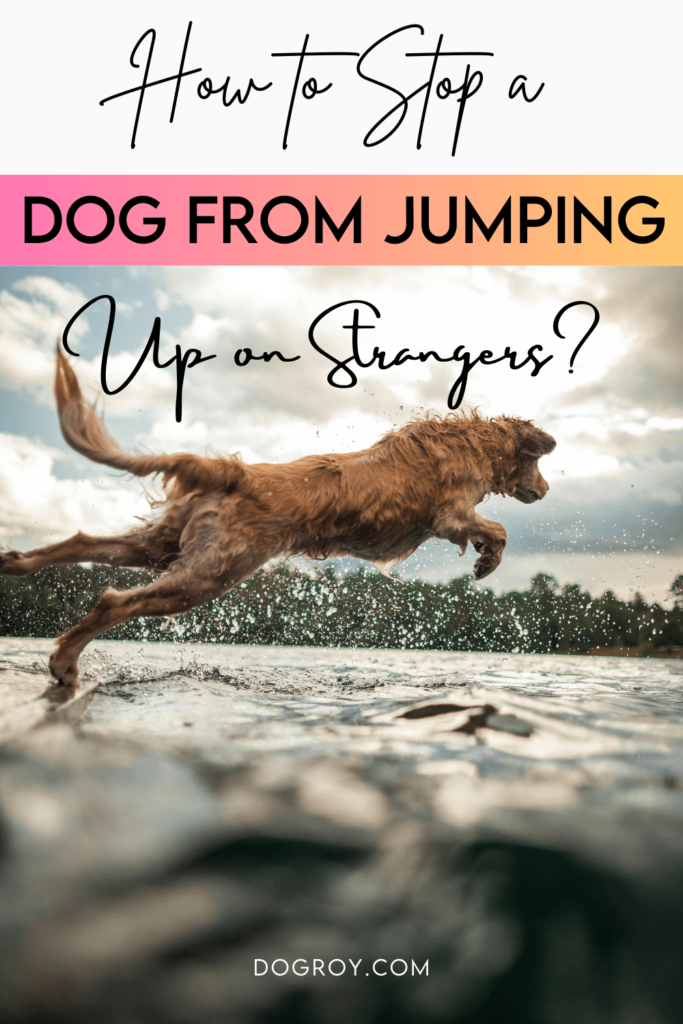
In conclusion, curbing the habit of jumping up on strangers is all about setting clear boundaries and teaching your dog some polite behavior.
Armed with the 12 tips provided in this guide, you’ll be well on your way to transforming your furry friend into a well-mannered companion.
So, roll up your sleeves, stay consistent, and enjoy the positive changes as you and your dog navigate social interactions with grace.

